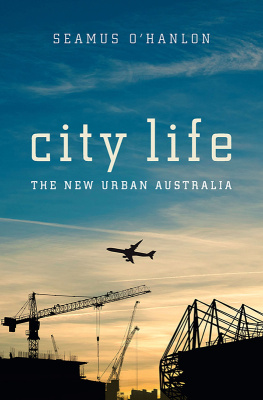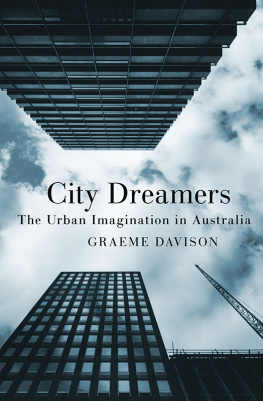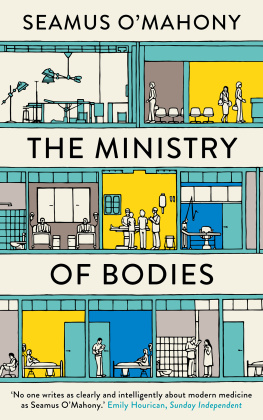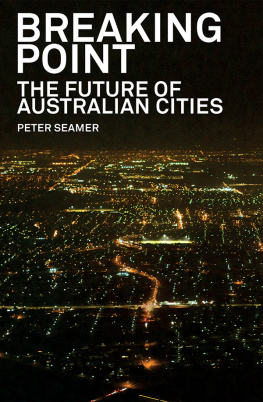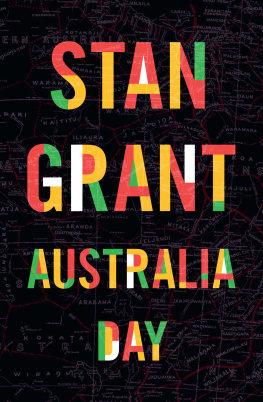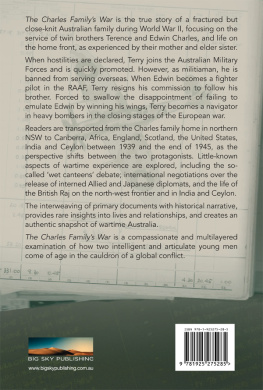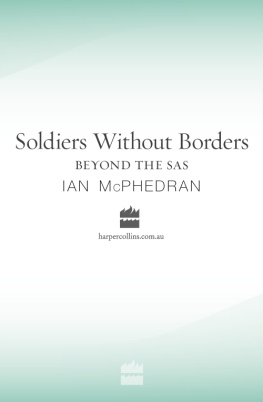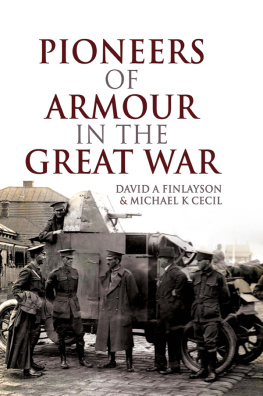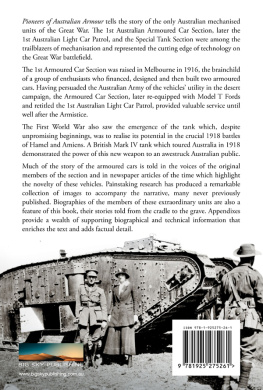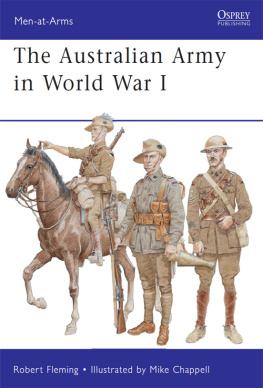Seamus OHanlon - City Life: The New Urban Australia
Here you can read online Seamus OHanlon - City Life: The New Urban Australia full text of the book (entire story) in english for free. Download pdf and epub, get meaning, cover and reviews about this ebook. year: 2018, publisher: NewSouth Publishing, genre: Politics. Description of the work, (preface) as well as reviews are available. Best literature library LitArk.com created for fans of good reading and offers a wide selection of genres:
Romance novel
Science fiction
Adventure
Detective
Science
History
Home and family
Prose
Art
Politics
Computer
Non-fiction
Religion
Business
Children
Humor
Choose a favorite category and find really read worthwhile books. Enjoy immersion in the world of imagination, feel the emotions of the characters or learn something new for yourself, make an fascinating discovery.
- Book:City Life: The New Urban Australia
- Author:
- Publisher:NewSouth Publishing
- Genre:
- Year:2018
- Rating:3 / 5
- Favourites:Add to favourites
- Your mark:
- 60
- 1
- 2
- 3
- 4
- 5
City Life: The New Urban Australia: summary, description and annotation
We offer to read an annotation, description, summary or preface (depends on what the author of the book "City Life: The New Urban Australia" wrote himself). If you haven't found the necessary information about the book — write in the comments, we will try to find it.
This book documents the changes that have come with the globalisation of the Australian city since the 1970s.
City Life: The New Urban Australia — read online for free the complete book (whole text) full work
Below is the text of the book, divided by pages. System saving the place of the last page read, allows you to conveniently read the book "City Life: The New Urban Australia" online for free, without having to search again every time where you left off. Put a bookmark, and you can go to the page where you finished reading at any time.
Font size:
Interval:
Bookmark:
city life
SEAMUS OHANLON is one of Australias leading urban historians and combines his academic career teaching contemporary and urban history at Monash University with a strong commitment to public outreach and community engagement. He has acted as an advisor on exhibitions on the history of Melbourne for Museum Victoria, the history of shopping for the State Library of Victoria, and the history of clothing manufacturing and the suburb of St Kilda for the Jewish Museum of Australia and Heritage Victoria. Seamus is a regular contributor to ABC local and national radio as well as community radio station 3RRR. His previous books include Together Apart, Go Melbourne, Melbourne Remade and Federation Square Melbourne: The first ten years.
city life
THE NEW URBAN AUSTRALIA
SEAMUS OHANLON

A NewSouth book
Published by
NewSouth Publishing
University of New South Wales Press Ltd
University of New South Wales
Sydney NSW 2052
AUSTRALIA
newsouthpublishing.com
Seamus OHanlon 2018
First published 2018
10 9 8 7 6 5 4 3 2 1
This book is copyright. Apart from any fair dealing for the purpose of private study, research, criticism or review, as permitted under the Copyright Act, no part of this book may be reproduced by any process without written permission. Inquiries should be addressed to the publisher.

A catalogue record for this book is available from the National Library of Australia
ISBN 9781742235615 (paperback)
9781742244266 (ebook)
9781742248684 (ePDF)
Design Josephine Pajor-Markus
Cover design Luke Causby, Blue Cork
Cover images City silhouette. Adobe Stock/Luke Causby
Printer Griffin Press
All reasonable efforts were taken to obtain permission to use copyright material reproduced in this book, but in some cases copyright could not be traced. The author welcomes information in this regard.
This book is printed on paper using fibre supplied from plantation or sustainably managed forests.

Contents
Introduction:
Globalising the Australian city
On 20 October 1973, millions of Australians on land, on boats and from the comfort of their own lounge rooms watched on as Queen Elizabeth II officially opened the Sydney Opera House. This stunning architectural masterpiece, perched on the Harbour at Bennelong Point, became almost overnight both Australias front door and the standard international visual representation of Sydney as a modern, vibrant cosmopolitan city on the rise. In the four decades since, the Opera House and the adjacent Harbour Bridge have gone on to rival Uluru as the default international image of the Australian nation. While the latter represents antiquity, Indigeneity and an older ideal of Australia as the Outback, these icons of Sydney represent what many Australians like to imagine is its new global incarnation as a successful outward-looking, urban, open, multicultural and diverse society seeking to cement its place in the emerging Asia-Pacific region. As Sydney increasingly became Australias gateway city in the 1970s and 1980s and beyond home to the headquarters of the majority of the countrys national and international business organisations, most of its big media and cultural outlets, the major entry point for tourists and new immigrants, and of course the Olympic City of 2000 it also began to market itself as Australias only global city, able to match it with the likes of New York, London and Paris on the world stage. The opening of the Opera House in 1973 was thus not only symbolic of Sydneys emergence as a major international city, but also the beginning of Australias entry into the contemporary global era.
For Australia the year 1973 was not just important for the opening of the Opera House. It was also the year in which the last of our troops were withdrawn from Vietnam, the White Australia policy was formally ended and the long-standing doctrine of economic protectionism began to be challenged when the newly elected Whitlam Labor government cut tariffs by 25 per cent across the board. Internationally it was also the year of the Yom Kippur War in the Middle East, which in turn was the prelude to the OPEC oil crisis and the onset of economic stagnation that brought the world rising inflation, high unemployment and the beginning of the end of what historians now refer to as the thirty glorious years of the postwar boom. For Australia, then, 1973 thus marks not only the emergence of Sydney as an international city but also the beginning of the end of an older version of the nation based on racial exclusion, heavily protected manufacturing industries, full employment and the Welfare State, all of which combined into what economists and historians call the postwar settlement. Locally and internationally this economic model and the car-based suburban society it gave rise to is often called Fordism, named after the founder of the Ford motor company, Henry Ford, whose cars and production methods helped to radically transform first American cities and metropolitan regions and then those of other nations, including Australia, in the twentieth century.
In the four decades since the end of the long boom, Australias economy, like that of all western nations, has been restructured to reflect the needs of an international economic system increasingly based on services rather than production, information rather than tangible goods, and the commodification of leisure and culture, the combined phenomena that has come to be known as post-Fordism, post-industrialism or more commonly globalisation. Nowhere have the impacts of these processes been more apparent than in the streets and suburbs of the worlds major cities, whose economies were once important sites of manufacturing but are now almost totally based on services. As the gateways to nations, cities have been at the forefront of globalisation, the places where new industries have located, where new immigrants have settled, where new ideas have been developed and tested, and where new forms of culture have entered and made their mark on the nation. Globalisation is thus an urban phenomenon, one of the major drivers of which has been new forms of transport and communications technologies including containerised shipping and cheap airfares, satellite communications, the mobile phone and most importantly the internet which have essentially erased the tyranny of distance.
So too the economic and cultural rise of Asia first in Japan and later South Korea, and then the Tiger economies of Singapore, Hong Kong, Taiwan and Malaysia and finally most recently the opening up, industrialisation and urbanisation of China has had a profound impact on the worlds economy, and again most especially on its cities. In the case of China, industrialisation and urbanisation have created unprecedented demand for raw commodities, which are then turned into products for export. Just as when, over two hundred years ago, first Britain and then later the United States and Europe industrialised, the vast wealth the industrialisation of Asia has generated has created an almost unlimited demand for international travel, consumer goods and luxury brands from its burgeoning local middle class. Perhaps more ominously, it has also led literally millions of people to look to invest in overseas real estate markets as a way to protect their new-found wealth from governments that neither respect the rule of law nor private property. More recently the opening up of India and especially its burgeoning high-technology sector has similarly created both a huge demand for luxury goods and also a vast pool of potential migrants looking for a better life in the west. As in the rest of Asia, the rapid rise in incomes and the growth of a middle class population seeking an education abroad has led to the emergence of a vast new industry: the provision of international higher education.
Next pageFont size:
Interval:
Bookmark:
Similar books «City Life: The New Urban Australia»
Look at similar books to City Life: The New Urban Australia. We have selected literature similar in name and meaning in the hope of providing readers with more options to find new, interesting, not yet read works.
Discussion, reviews of the book City Life: The New Urban Australia and just readers' own opinions. Leave your comments, write what you think about the work, its meaning or the main characters. Specify what exactly you liked and what you didn't like, and why you think so.

